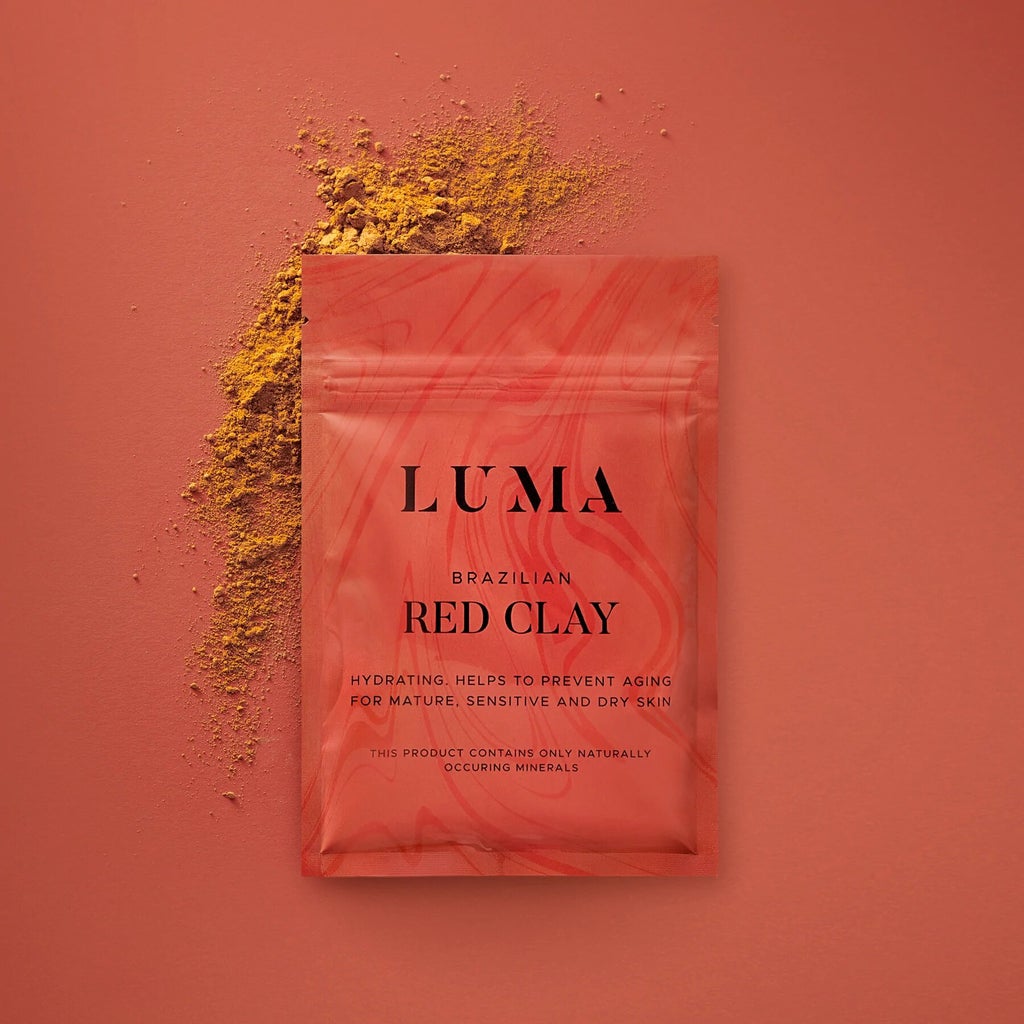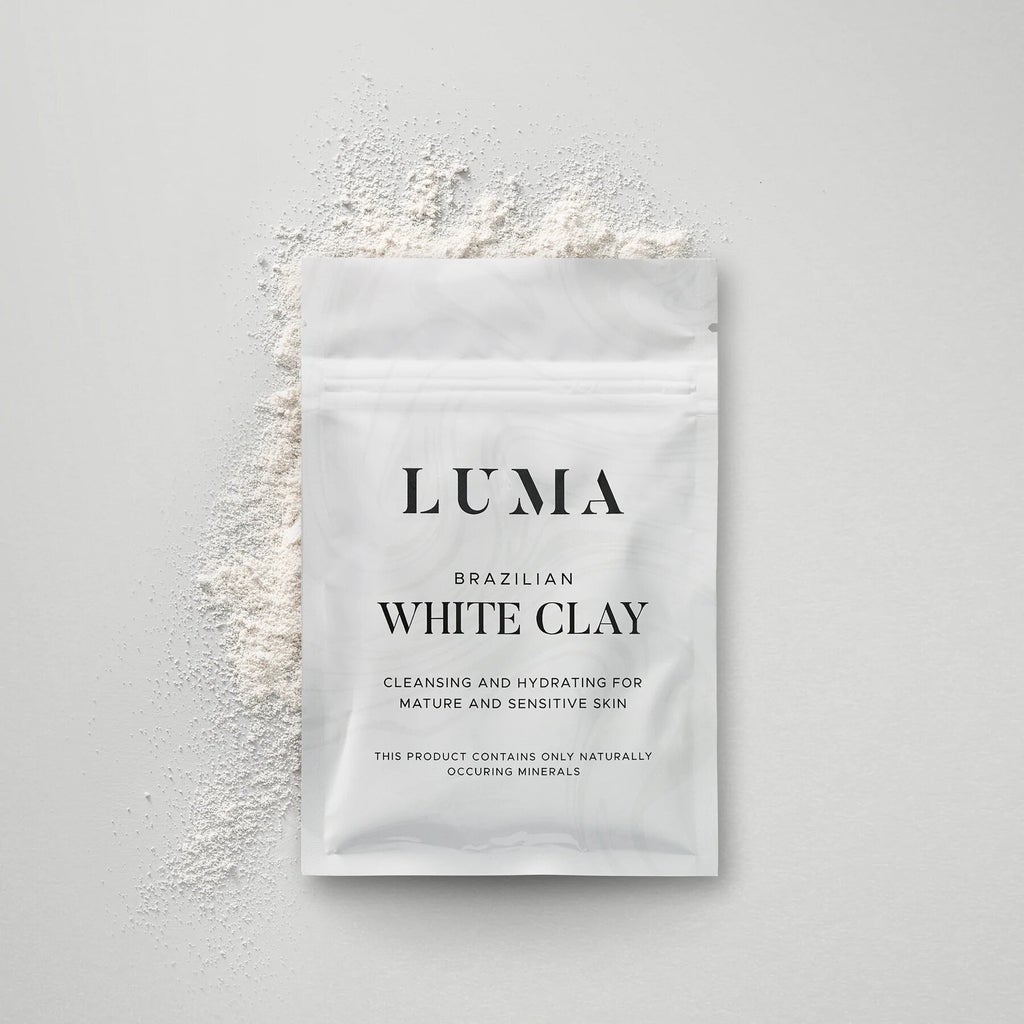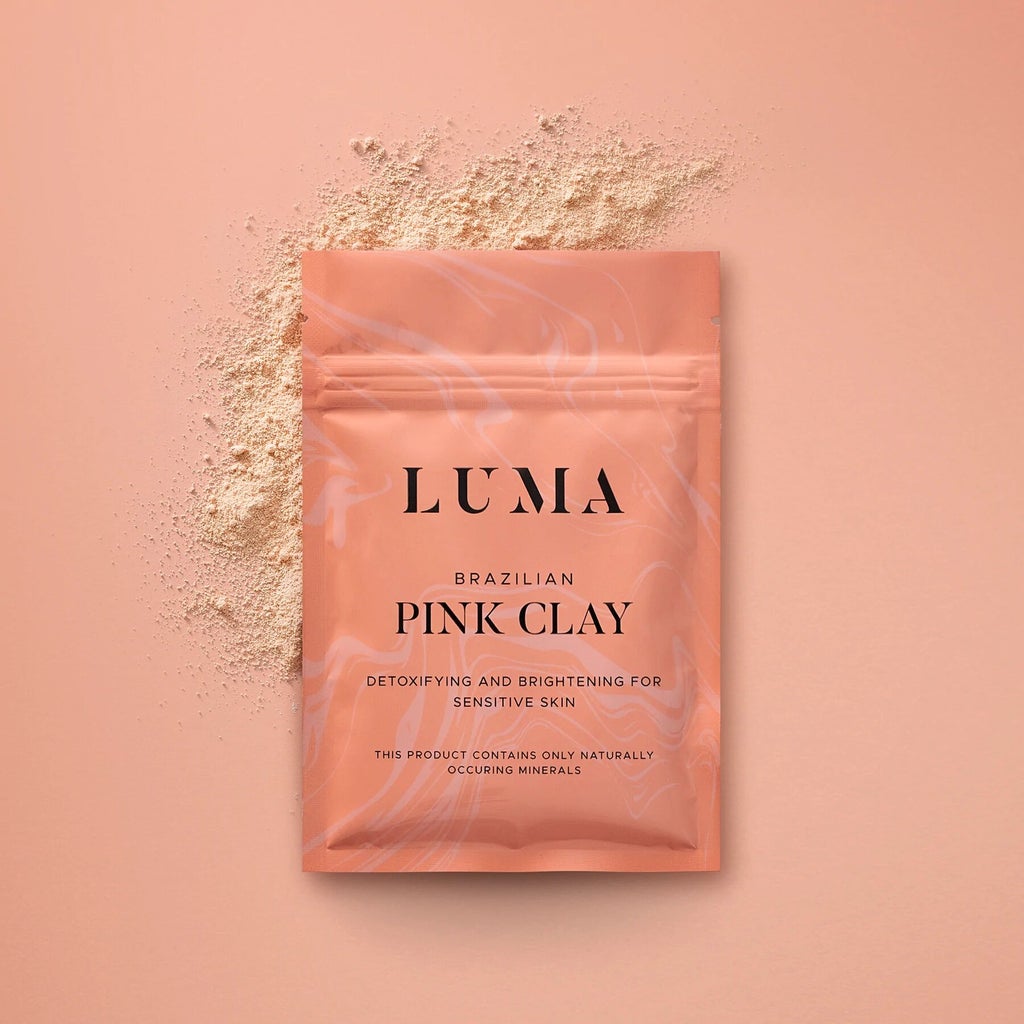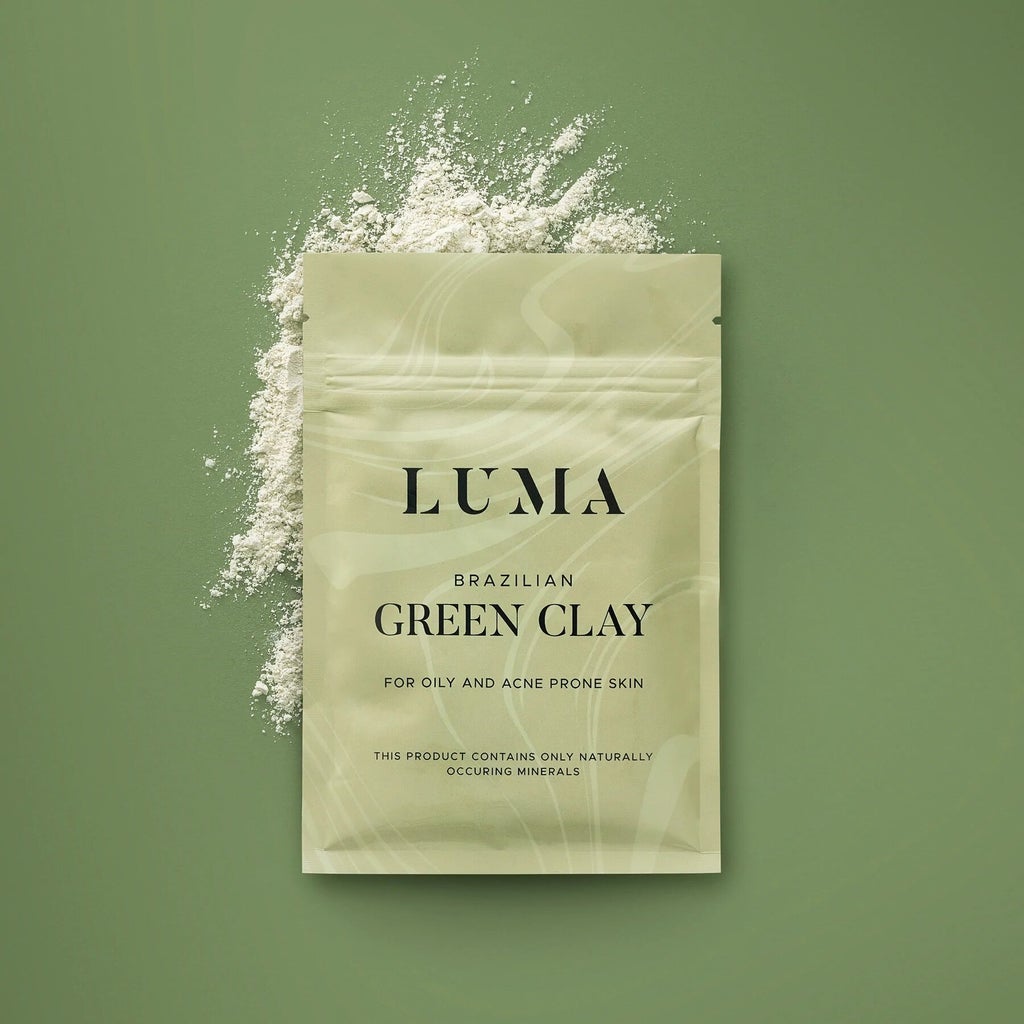Clay masks are nothing new in the world of beauty — we’ve been putting the good, gloopy stuff on our faces for several millennia. The practice dates back over 5,000 years to India, where it was part of ancient Ayurvedic tradition; it was later used in Indian religious rituals and weddings. Cleopatra was a fan, too. According to archaeologists, she applied clay from the Dead Sea to her skin twice a week.
In the modern world, several clay masks have gone viral. But big names and impressive social media numbers aside, many of us don’t know much about clay, including the benefits, how best to use it and, most importantly, all the different types of clay masks out there. This is where Lumaskin comes in. The chemical-free, sustainable beauty brand champions the natural power of Brazilian beauty — namely Brazilian clay masks in an array of rainbow shades (that’s right, it’s not just about pink clay).
New to the brand, we tried out the full six-piece lineup — and can safely say we’re big fans. Read on for our honest thoughts and to discover which clay mask is right for you.

What are clay masks and why are they so good for our skin?
There are many types of clay out there but the most commonly used in cosmetics is kaolin. Created deep in the Earth from mineral deposits — primarily the mineral kaolinite (hence the name) but also feldspar, quartz, silica, copper, magnesium and zinc — kaolin is considered one of the purest natural beauty ingredients in the world, with a relatively neutral pH of around 4.5 (which is close to the skin’s natural pH of 5.5).
This means that kaolin masks are a mild choice and suited to a wide range of skin types. Kaolin has powerful anti-inflammatory, purifying and ‘detoxifying’ properties, drawing out impurities and excess oils while nourishing and hydrating the skin. Besides Cleopatra, the ancient Greeks and Romans used the stuff for medicinal purposes, creating clay plasters for wounds and prescribing mud baths to soothe inflamed skin.
So where does Brazilian clay come in?
Good question. Brazilian clay is technically a sub-category of kaolin clay. Once mined only in China, you can now find kaolin clay across the world, including Brazil, where Lumaskin sources its clay. Brazilian clay is one of the most gentle types of kaolin clay. It’s perfect for sensitive skin, helping to lightly exfoliate the skin at the same time as cleansing. Those with dry skin may benefit too, as it doesn’t overly purge the skin of necessary oils.
But why are there so many different colours of clay masks?
In its purest form, kaolinite (the mineral that forms kaolin clay) is a bright white colour. Depending on the mineral content of the area it is mined in, however, it may be coloured a different hue. For example, reddish kaolin clay — sold simply as a red clay mask — is caused by higher levels of iron oxide deposits; green is a combination of iron oxides and decomposed plant matter (often algae). Each colour of clay has different properties and different uses. Read on for the best clay for your skin…
Red clay masks – what are they used for and what are the benefits?
Lumaskin, Brazilian Red Clay, £6.50 £5

Best for: mature skin, dry skin
Lumaskin calls this the “Brazilian clay of youth” and for good reason. Naturally rich in iron oxide (hence the reddish orange hue), red clay masks help stimulate microcirculation in the blood vessels to soften and wake up the skin, reviving and brightening the face.
In the same way, Brazilian red clay is also great for dry skin or for those prone to redness as it will brighten the complexion while hydrating and soothing discomfort.
Yellow clay masks – what are they used for and what are the benefits?
Lumaskin, Brazilian Yellow Clay, £6.00 £5

Best for: mature skin, oily skin, blackheads and acne
Yellow clay is naturally rich in silicon dioxide, which helps to protect our skin’s collagen levels, boosting plumpness. As a result it’s great for mature skin or those looking to rejuvenate and refresh a dull complexion. It is also a natural astringent so helps to cleanse the skin, remove excess oil and tackle acne and blackheads.
Black clay masks – what are they used for and what are the benefits?
Lumaskin, Brazilian Black Clay, £6.50 £5

Best for: oily skin, blackheads and acne, red or inflamed skin
Those with particularly sensitive, dry or dehydrated skin should avoid black Brazilian clay. Mined from volcanic soil, this stuff is rich in sulphur and can potentially dry out the skin. It’s also rich in titanium, making it a strong antioxidant and a really powerful anti-inflammatory treatment for oily and acne-prone skin. It empties clogged pores and stimulates cell renewal, while anecdotal evidence suggests it fades acne scars over time. Use if you feel your face needs a rebalance.
White clay masks – what are they used for and what are the benefits?
Lumaskin, Brazilian White Clay, £6.00 £5

Best for: dry skin
White clay has the purest percentage of kaolinite, the mineral which helps to repair skin and hair. This also means that it’s the most gentle and hydrating of the Brazilian clays, absorbing excess oil without stripping the skin and healing dry, damaged complexions.
Pink clay masks – what are they used for and what are the benefits?
Lumaskin, Brazilian Pink Clay, £6.00 £5

Best for: sensitive skin
If you have sensitive skin, this is the mask for you. It’s pink because it’s a mixture of white and red clay, therefore combining the benefits of both. It heals, hydrates and regenerates while absorbing dirt and grime. Pink clay’s combination of minerals — copper, selenium, manganese, magnesium and zinc — also results in a pH level closest to that of human skin. This means it’s best for those whose skin tends to flare up with overly complicated or processed products.
Green clay masks – what are they used for and what are the benefits?
Lumaskin, Brazilian Green Clay, £6.00 £5

Best for: oily skin
Green Brazilian clay has the highest absorption level of the lot, meaning that this is the best option for those with excessively oily skin. It will reduce the appearance of blackheads, minimise the appearance of enlarged pores and mattify the skin.
At Refinery29, we’re here to help you navigate this overwhelming world of stuff. All of our market picks are independently selected and curated by us. All product details reflect the price and availability at the time of publication. If you buy or click on something we link to on our site, we may earn a commission.
Welcome to Hype Machine, our hit-list of the brands, products or services we think you need to know about now – from cult classics to much-hyped newbies.
Like what you see? How about some more R29 goodness, right here?
These Two Products Made My Acne-Prone Skin Glow